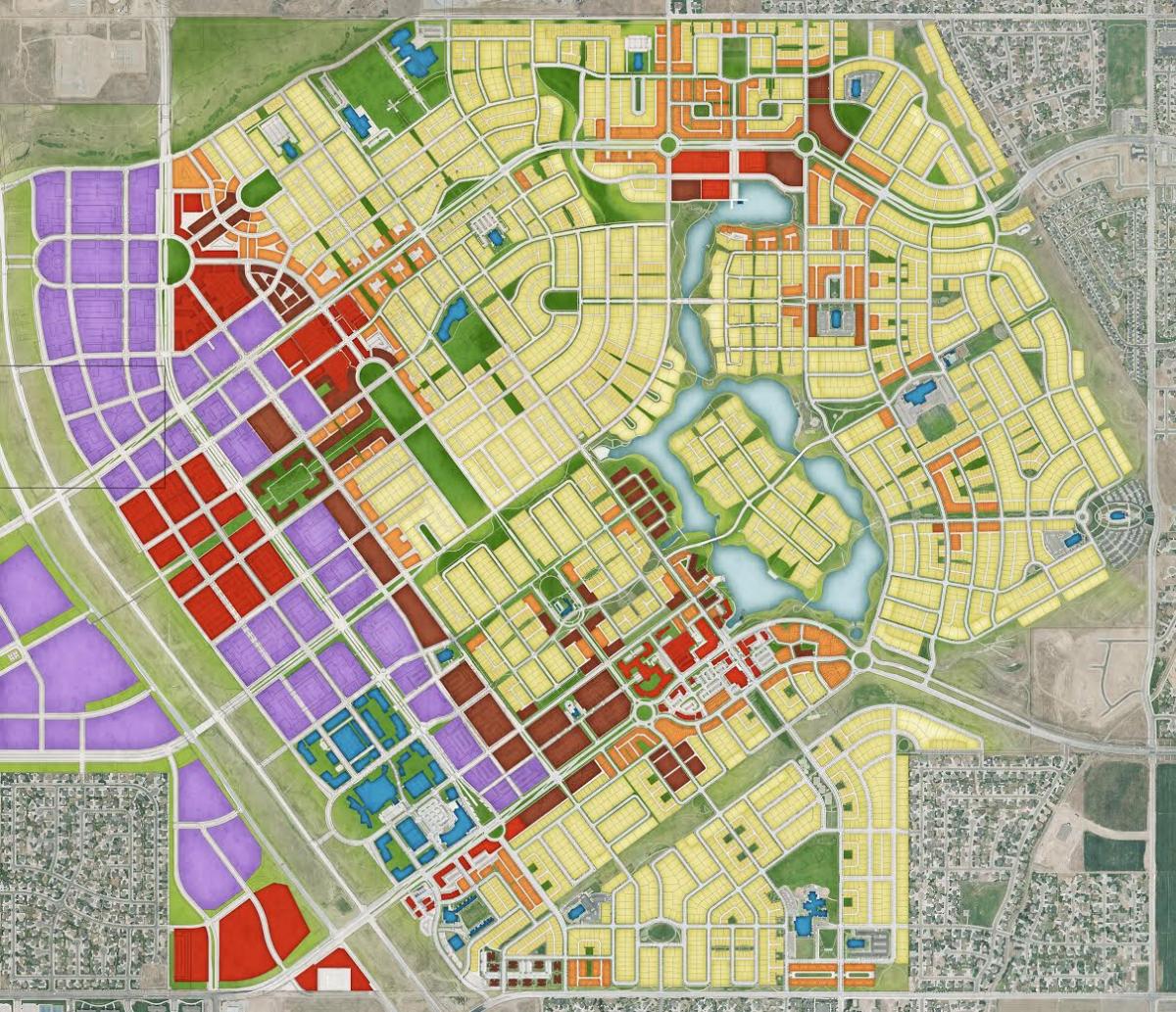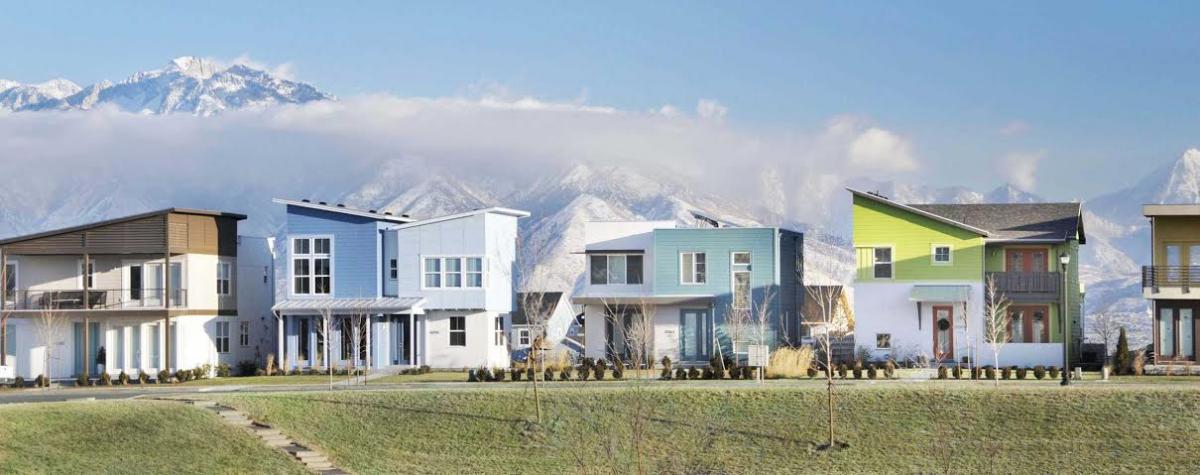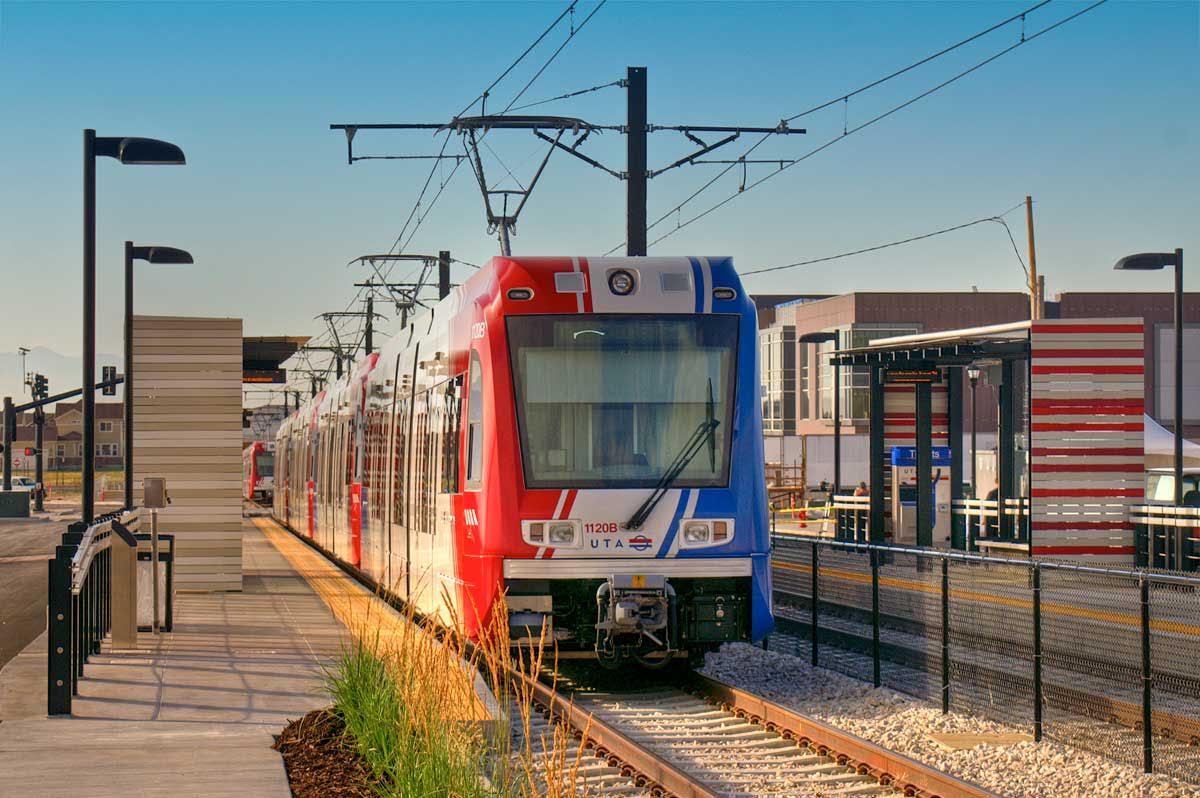One of the more visible outcomes of Envision Utah, an influential public-private initiative that is guiding the state's land-use and transportation, South Jordan, Utah’s Daybreak stands as one of the largest traditional neighborhood development in the country. Spanning 4,100 acres in the greater Salt Lake City region, Daybreak has been a “highly successful planned mixed-use development” by Governing Magazine.
Since breaking ground in 2004, Daybreak has grown to include more than 12,000 residents. Today, one in five new homes in Salt Lake County, with more than a million people in the Salt Lake City region, is built in the development. Daybreak is connected to light rail and is constructed, in part, on reclaimed mining land.

A growing town center, parks, schools, churches, and employment are built into the community. An urban center of 60,000 people, with up to 15 million square feet of commercial space, is expected to be complete at Daybreak by mid-century.
About 60 percent of Daybreak residents are families with children, with the rest empty nesters, married couples without children, and singles. That unusual demographic mix—characteristic of the unique Utah market—shows how walkable places can appeal to traditional families. “Parents feel comfortable letting their kids out on their own. They are attracted to places where kids don’t need play dates," says Stephen James, manager of planning and community design for the developer, Kennecott Land.
The accomplishments of Envision Utah, which won a 2001 CNU Charter Award for Calthorpe Associates, are "undeniably impressive, even remarkable," according to Governing. Despite a statewide population increase of 30 percent since 1998, Utah's water use has fallen by a quarter, inventoried air pollutants are cut by 50 percent, the rate of land consumption has fallen in half, and vehicle miles traveled remain at late 1990s levels, "largely because of improved community design and a dramatic increase in public transit." With 70 rail and light-rail stations, Utah has vaulted ahead of a number of larger states in its mass transit infrastructure.

Envision Utah is a "loosely defined, public-private-nonprofit partnership that includes most every stakeholder imaginable: local public officials, planning professionals, developers, conservationists, business and community leaders, and just about anyone else who shows an interest and a willingness to collaborate for a common purpose," says Governing. The voluntary organization created a regional plan in the late 1990s that employs many new urban principles. It directs growth to areas that are served by mass transit—including infill neighborhoods and places like Daybreak.
Daybreak is intended as a model for growth in the Salt Lake area, offering six key lessons to developers:
- Provide a wider range of housing to meet people's needs throughout their lives.
- Move jobs and shopping closer to homes to shorten commutes. This improves air quality and frees up time to do the things we enjoy.
- Build efficient and cost-effective infrastructure to give people a choice in how they move around.
- Deliver more tax revenue per unit of infrastructure, so the government will have more resources to maintain that infrastructure.
- Build for energy efficiency and preservation of water resources.
- Preserve key parks and open space areas in close proximity to residents.

Daybreak represents one of Utah's best opportunities to organize suburban growth in the region into something that is multimodal and walkable. It is a true success story of an ambitious, multi-faceted regional plan turned into action on the ground.
Top Photo: Daybreak town center. Source: Photo courtesy of Daybreak.
Daybreak South Jordan, Utah
Year
Ongoing
Characteristics
Transit-Oriented Development
Housing
Traditional Neighborhood Development
